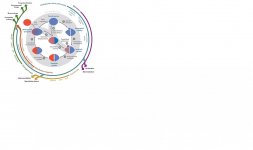Fred Ruhe
Well-known member

Joseph A. Tobias, Jente Ottenburghs & Alex L. Pigot, 2020
Avian Diversity: Speciation, Macroevolution, and Ecological Function
Annual Review of Ecology, Evolution, and Systematics 51 (advance online publication)
doi: https://doi.org/10.1146/annurev-ecolsys-110218-025023
https://www.annualreviews.org/doi/abs/10.1146/annurev-ecolsys-110218-025023
Abstract
The origin, distribution, and function of biological diversity are fundamental themes of ecology and evolutionary biology. Research on birds has played a major role in the history and development of these ideas, yet progress was for many decades limited by a focus on patterns of current diversity, often restricted to particular clades or regions. Deeper insight is now emerging from a recent wave of integrative studies combining comprehensive phylogenetic, environmental, and functional trait data at unprecedented scales. We review these empirical advances and describe how they are reshaping our understanding of global patterns of bird diversity and the processes by which it arises, with implications for avian biogeography and functional ecology. Further expansion and integration of data sets may help to resolve longstanding debates about the evolutionary origins of biodiversity and offer a framework for understanding and predicting the response of ecosystems to environmental change.
Enjoy,
Fred
Avian Diversity: Speciation, Macroevolution, and Ecological Function
Annual Review of Ecology, Evolution, and Systematics 51 (advance online publication)
doi: https://doi.org/10.1146/annurev-ecolsys-110218-025023
https://www.annualreviews.org/doi/abs/10.1146/annurev-ecolsys-110218-025023
Abstract
The origin, distribution, and function of biological diversity are fundamental themes of ecology and evolutionary biology. Research on birds has played a major role in the history and development of these ideas, yet progress was for many decades limited by a focus on patterns of current diversity, often restricted to particular clades or regions. Deeper insight is now emerging from a recent wave of integrative studies combining comprehensive phylogenetic, environmental, and functional trait data at unprecedented scales. We review these empirical advances and describe how they are reshaping our understanding of global patterns of bird diversity and the processes by which it arises, with implications for avian biogeography and functional ecology. Further expansion and integration of data sets may help to resolve longstanding debates about the evolutionary origins of biodiversity and offer a framework for understanding and predicting the response of ecosystems to environmental change.
Enjoy,
Fred




